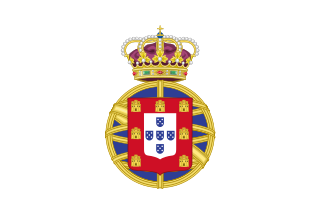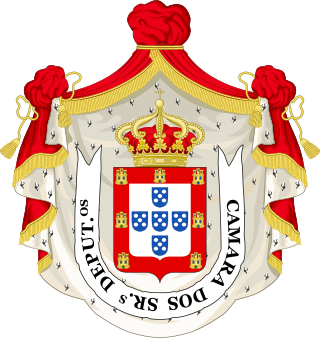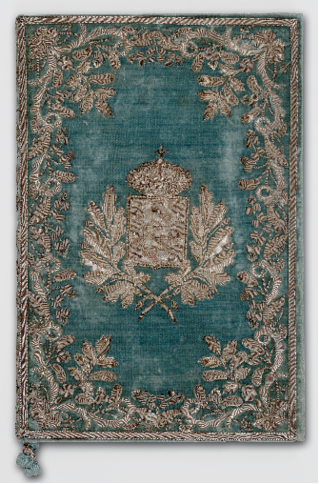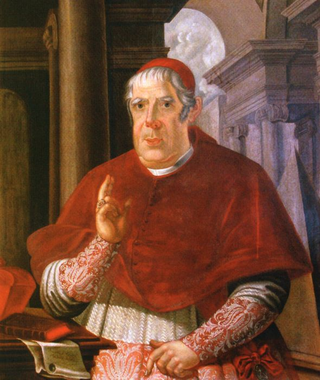
In modern politics, and history, a parliament is a legislative body of government. Generally, a modern parliament has three functions: representing the electorate, making laws, and overseeing the government via hearings and inquiries. The term is similar to the idea of a senate, synod or congress and is commonly used in countries that are current or former monarchies. Some contexts restrict the use of the word parliament to parliamentary systems, although it is also used to describe the legislature in some presidential systems, even where it is not in the official name.

The Liberal Wars, also known as the War of the Two Brothers, was a war between liberal constitutionalists and conservative traditionalists in Portugal over royal succession that lasted from 1832 to 1834. Embroiled parties included the Kingdom of Portugal, Portuguese rebels, the United Kingdom, France, the Catholic Church, and Spain.

A speech from the throne, or throne speech, is an event in certain monarchies in which the reigning sovereign, or their representative, reads a prepared speech to members of the nation's legislature when a session is opened. The address sets forth the government's priorities for its legislative agenda, for which the cooperation of the legislature is sought. The speech is often accompanied by formal ceremony. It is often held annually, although in some places it may occur more or less frequently, whenever a new session of the legislature is opened.

DomMiguel I, nicknamed "the Absolutist", "the Traditionalist" and "the Usurper", was the King of Portugal between 1828 and 1834. He was the seventh child and third son of King John VI and Queen Carlota Joaquina.
The chamber of deputies is the lower house in many bicameral legislatures and the sole house in some unicameral legislatures.

The present Constitution of Portugal was adopted in 1976 after the Carnation Revolution. It was preceded by a number of constitutions including the first one created in 1822, 1826, 1838, 1911, and 1933.

The Chamber of Deputies, abbreviated to the Chamber, is the unicameral national legislature of Luxembourg. The metonym Krautmaart is sometimes used for the Chamber, after the square on which the Hôtel de la Chambre is located.
The São Bento Palace in Lisbon is the seat of the Assembly of the Portuguese Republic, the parliament of Portugal. Originally constructed in 1598, São Bento has served as the seat of Portugal's parliament since 1834, when the former monastery of the Benedictine Order was dissolved after the Liberal Wars. During the Portuguese constitutional monarchy, the palace served as the seat of the Cortes Gerais, the traditional parliaments of Portugal, until 1910.

The Kingdom of Portugal under the House of Braganza was a constitutional monarchy from the end of the Liberal Civil War in 1834 to the Republican Revolution of 1910. The initial turmoil of coups d'état perpetrated by the victorious generals of the Civil War was followed by an unstable parliamentary system of governmental "rotation" marked by the growth of the Portuguese Republican Party. This was caused mainly by the inefficiency of the monarchic governments as well as the monarchs' apparent lack of interest in governing the country, aggravated by the British ultimatum for the abandonment of the Portuguese "pink map" project that united Portuguese West Africa and Portuguese East Africa.

The United Kingdom of Portugal, Brazil and the Algarves was a pluricontinental monarchy formed by the elevation of the Portuguese colony named State of Brazil to the status of a kingdom and by the simultaneous union of that Kingdom of Brazil with the Kingdom of Portugal and the Kingdom of the Algarves, constituting a single state consisting of three kingdoms.

Luís da Silva Mouzinho de Albuquerque was a Portuguese military officer, engineer, poet, scientist and politician, who distinguished himself during the Liberal Wars and in the conflicts that marked Portugal's history in the first half of the 19th century. He served as the Minister of the Kingdom during the liberal regency of Pedro of Braganza. This was the most prominent post inside the government at that time, which made him the Prime Minister of Portugal in all but name. He was also several times minister and deputy minister during the Constitutional Monarchical period. Among other offices, he served as Chief of the National Mint, captain-general and governor of Madeira, and inspector-general of public works. He was the grandfather of Joaquim Augusto Mouzinho de Albuquerque, a military officer and colonial administrator.

The Chamber of Peers of Portugal, alternatively translatable as the House of Lords and formally styled the Chamber of the Most Worthy Peers of the Realm, was the upper house of the Cortes Gerais, the legislature of the Kingdom of Portugal during most of the constitutional monarchy period. Members of the Chamber were Peers of the Realm, appointed directly at the pleasure of the Portuguese monarch.

The Charter of 1826 or Carta Constitucional, often simply referred to as the Carta, was the second constitution in Portuguese history. It was given to the country in 1826 by King Dom Pedro IV. The constitution remained in force, with the exceptions of the periods 1828–1834 and 1838–1842, until the fall of the monarchy in 1910. It was modified in 1852, 1865, 1896, and 1907. The constitution was modelled on the 1824 Brazilian constitution that Pedro imposed on the country, which in turn was modelled on the failed 1822 Portuguese Constitution, which in turn was modelled on the Spanish Constitution of 1812.

The House of Lords was the upper house of the Imperial Council, the bicameral legislature of the Austrian Empire from 1861 and of the Cisleithanian (Austrian) half of Austria-Hungary upon the Compromise of 1867. Created by the February Patent issued by Emperor Franz Joseph I on 26 February 1861, it existed until the end of World War I and the dissolution of the Dual Monarchy, when on 12 November 1918 the transitional National Assembly of German-Austria declared it abolished. It was superseded by the Federal Council of the Austrian Parliament implemented by the 1920 Federal Constitutional Law.

The Chamber of Deputies of Portugal, alternatively translatable as the House of Commons and formally styled the Chamber of the Gentlemen Deputies of the Portuguese Nation was the lower house of the Cortes Gerais, the legislature of the Kingdom of Portugal during most of the constitutional monarchy period. The Chamber of Deputies directly represented the Portuguese Nation, elected through direct suffrage of the electoral circuits corresponding to the districts of Portugal. During the First Republic, the Chamber of Deputies was remodeled after the US House of Representatives.
The Senate was the upper house of the Parliament of Portugal during the periods of validity of the Constitution of 1838 (1838-1842) and of the Constitution of 1911 (1911-1933).

Parliamentary elections were held in Portugal on 5 and 19 June 1842.

The Political Constitution of the Portuguese Monarchy(Constituição Política da Monarquia Portuguesa) of 1838 was the third Portuguese constitution.

Frei Francisco de São Luís, O.S.B., religious name of Francisco Manuel Justiniano Saraiva and today more commonly known as Cardinal Saraiva, was a Portuguese Cardinal of the Catholic Church, who was the eighth Patriarch of Lisbon from 1840 to 1845.





















